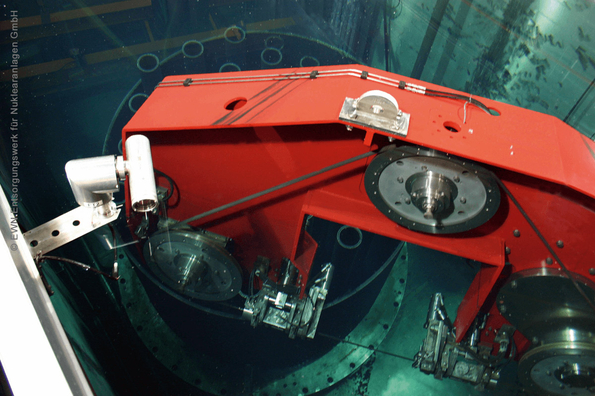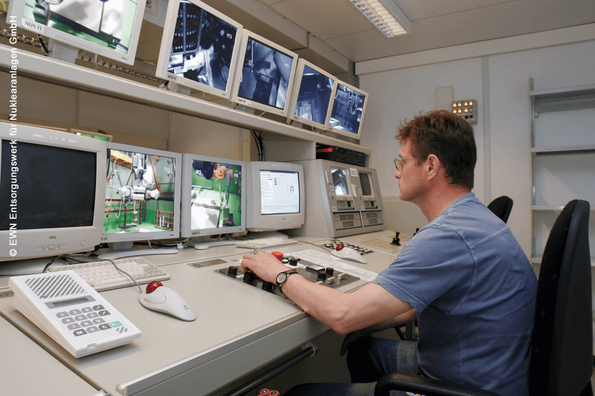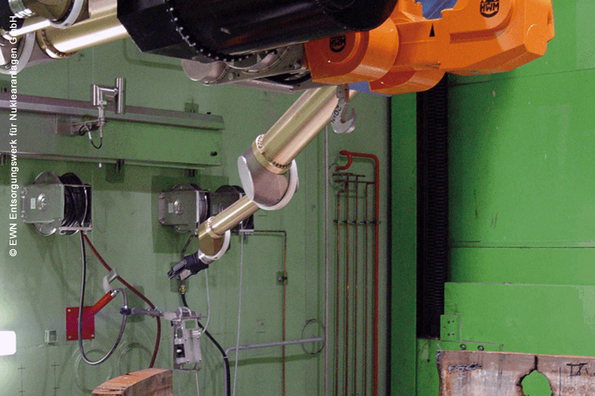Dismantling and disassembly techniques
Dismantling and disassembly techniques are needed for a wide range of tasks and applications during the dismantling of nuclear facilities. Components must be removed from the plant and disassembled into manageable pieces. This is an important prerequisite for all aspects of waste and residue management.
The tasks range from, for instance, simply detaching a thin pipe that has never been in contact with radioactive substances to dismantling and disassembling large vessels and thick-walled pipes that came in contact with radioactive liquids all the way to dismantling the reactor pressure vessel and its internal components.
Another important task is the subsequent disassembly of large components that have already been dismantled, e.g. for the purpose of decontamination or clearance measurement. Apart from various types of metal, concrete components that contain reinforcing steel also have to be disassembled, for example the biological shield or building structures.
Underwater cutting of components

If work has to be carried out in an area with a high radiation dose rate or on highly radioactive components, this cannot be done manually but has to be performed by remote control – often under water. The water forms an effective shield against the radiation emitted by the materials being disassembled. The criteria determining which of the available techniques are most suitable are, above all, safety, but also cutting speed, maximum separable material thickness, and the release of dusts (aerosols).
This requires disassembly techniques that can be applied in a range of areas and conditions, even under water if necessary.
Thermal disassembly techniques

Thermal disassembly techniques melt the material using a flame, an electric arc or a laser beam and then blow the molten material from the cutting area (kerf) with a water or gas jet or simply by gravitational force. These techniques are used far more frequently for metals than for concrete or other conventional building materials. Some techniques are suitable for both types of material. Thermal cutting in air and under water produces particulate emissions known as aerosols or hydrosols, which can be controlled with commercial ventilation and filter systems.
Important thermal techniques are:
- oxyacetylene cutting
- plasma arc cutting
- electric arc cutting
- electro discharge machining
- laser cutting.
Mechanical disassembly techniques

Mechanical disassembly techniques generate kerf by removing material mechanically. The chippings and dust generated during cutting are relatively coarse and can easily be captured using filters. Mechanical cutting techniques are used for metals and building structures.
Important mechanical techniques are:
- conventional sawing,
- wire sawing,
- milling,
- cut-off grinding,
- shearing,
- abrasive water-jet cutting.